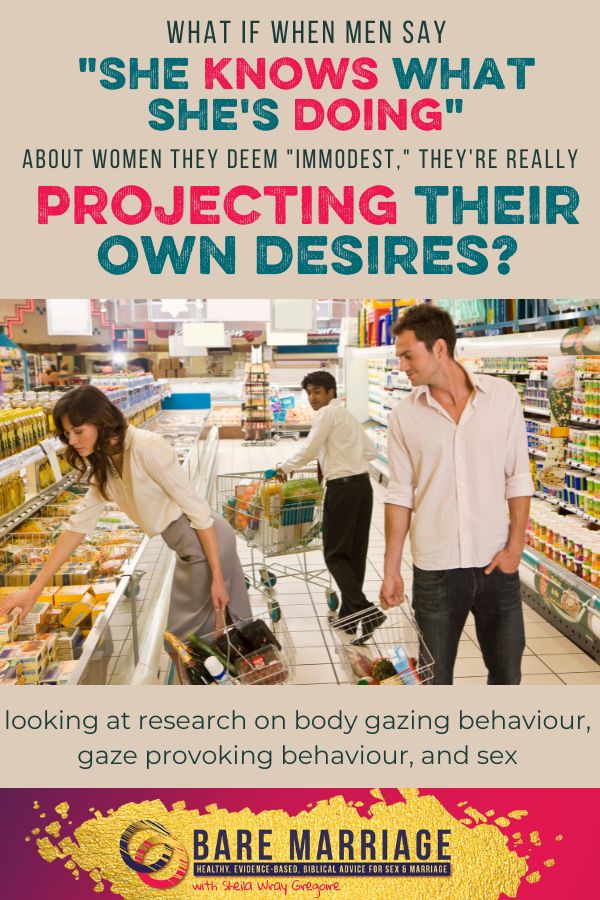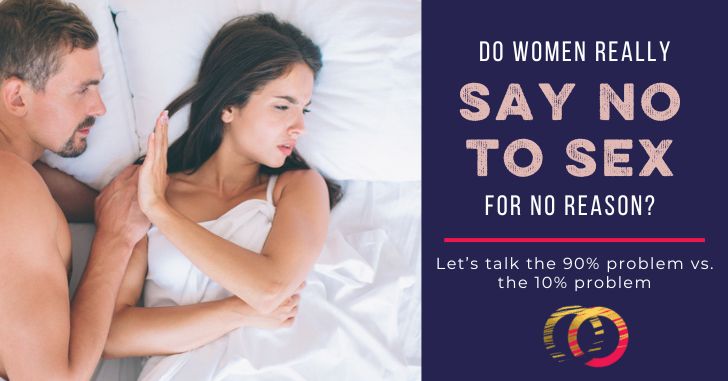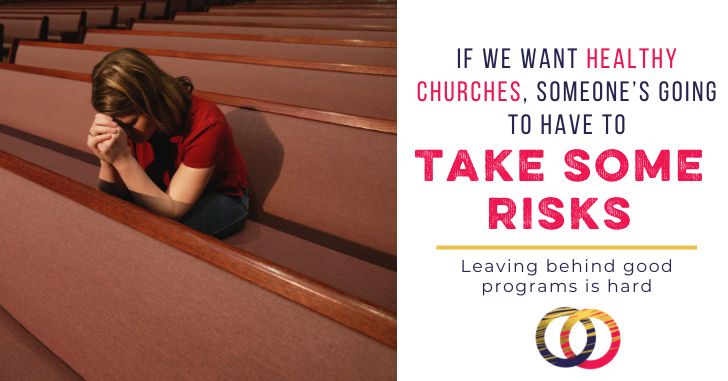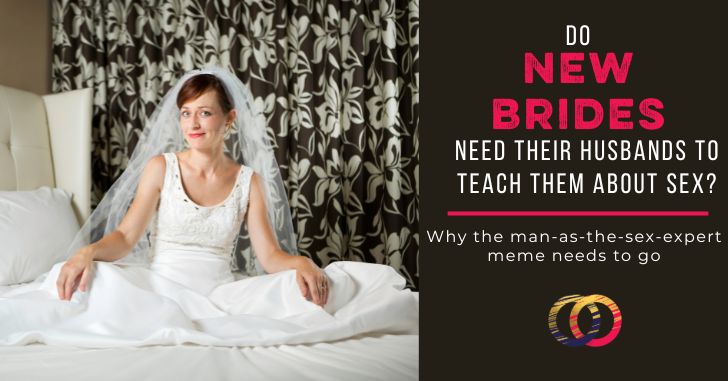How many of us have heard a grown man grumble about what a teenager is wearing, saying “She knows what she’s doing”?
Rebecca here on the blog, bringing you another dose of data from new research we haven’t reviewed on the blog yet! This one is super interesting, and throws a lot of our preconceived notions about how we dress on its head. There are TONS of different aspects of the results we could dive into today, but I want to focus on the ones that have to do with the “all men struggle with lust” message, and the idea that young girls who dress immodestly “know what they’re doing” to the men around them.
Researchers set out to ask: how do men and women differ in both how they look at other peoples’ bodies but also in how they try to elicit looks from others?
Now, our basic logic, based on how we talk as a culture, is that men look more and women elicit looks more, right? Women wear makeup, dress immodestly, and so as a whole that’s how we keep “balanced.” Men look, and women want them to.
Turns out, nope.
Not only did men look far more than women looked, men also engaged in more gaze-provoking behaviours than women did.
The study explains, “We found that women reported relatively low body gaze
provocation behavior, and this was signifcantly lower than men. As such, any argument claiming that women invite body gaze more so than men is not supported by our data.”
That means that when a man says about a woman, “She knows what she’s doing dressing like that,” it’s much more likely that’s projecting his own desire to have people look at him sexually than it is true that she is dressing for attention.
So let’s break this down. Here’s a graph explaining the differences between the sexes, based on relationship status:

On the left, the graph is measuring how much each sex engages in “pervasive body gazing”, based on relationship status. As you’ll see, women who are single engage in more body gazing than women in relationships, but even men in relationships body gaze more than single women.
And on the right, we have “body gaze provocation,” or dressing in a way to get others to look at you. Again, we see that single women engage in this more often–and that makes sense. You’re trying to attract a mate! However, both single AND spoken for men engage in more body gaze provocation than even single women.
In other words, body gazing and body gaze provocation, for women, seems to be a functional tool–they are more likely to use it while trying to get into a relationship. For men, however, it is not tied to relationship status.
There are some more really interesting differences between men and women, though.
For women, if a woman engaged in high body-gazing behaviours, she tended to look at bodies when the subject was in a state of partial undress and looked at the face when the subject was clothed. In other words, women’s body-gazing behaviours tended to be context specific.
Men, however, were still more likely to look at a woman’s body than they were her face even when she was covered up.
What this says to me is that, frankly, when a man looks at a woman’s (or a girl’s) body, it has less to do with what she’s wearing and more to do with him being the kind of man who looks at people’s bodies. If her having clothes on won’t change whether or not he looks at her face or her breasts, modesty rules can’t be the answer to men’s pervasive body gazing.
But regardless of sex, pervasive body gazing and gaze-provoking behaviours have bad outcomes.
In the words of the study itself, here’s the summary of the findings regarding body gazing and problematic beliefs and behaviours:
Across both our studies, pervasive gaze behavior correlated with rape attitudes, specifcally increased victim blame in women and men. While these associations might be more interpretable for men given the heterosexual nature of the sexual assault items (e.g., male perpetrator and female victims), it is interesting that they also exist for women. Specifcally, men who pervasively gaze at women’s bodies may be more likely to assume that women invite or are tolerant of rough sexual conduct toward them. For women, their pervasive body gaze behavior toward men also correlated with victim-blaming attitudes. That is, women in our study who pervasively gaze at men’s bodies were more likely to attribute responsibility to women for their role in a sexual assault.
Gaze provoking behaviours were also correlated with higher rates of pornography use for both men and women, but this was more consistent with women, interestingly enough! The researchers posited that it may be because in pornography women are portrayed as more sexually provocative and alluring, and so women who watch pornography may be more socialized to try to dress that way in their real lives than men who watch pornography.
Additionally, similar to with body gaze behaviours, gaze provocation behaviours were correlated with higher rates of rape myth beliefs.
This increased rape myth beliefs among both sexes, but there was a really interesting stand-out finding from the women.
Interestingly, women who dressed with more gaze-provoking behaviours were far more likely to believe “she wanted it” types of messaging in regards to rape victims. Considering gaze-provoking behaviour’s correlation with pornography use among women, that doesn’t surprise me since we already know from other research that porn use increases women’s beliefs that rape victims aren’t really victims, but were asking for it or wanted it.
Download Our Marriage Survey
Join 40,00 others and let's change the evangelical conversation about sex
Overall, this study shows that a lot of our preconceived notions about men and women in terms of lust and trying to attract attention are wrong.
Yes, women do engage in gaze-provoking behaviour. But it’s less often than men, and according to the study authors, it is likely for a set reason–to find a mate! Then, when they settle down, they stop trying to draw as much attention to their bodies. So what does that say? It means she’s likely not trying to get EVERY man’s attention–she’s trying to attract the RIGHT guy.
So if a 59-year-old man is getting offended at the 16-year-old in the little flippy sundress at church, tell him to pipe down. She’s not dresssing that way for you. She’s dressing that way for 16-year-old Ezra who plays guitar on the praise band.
But it also shows that people who do engage in these behaviours, who complain about not being able to look away, who seem to be personally victimized by women with bodies they find attractive–they are not safe people.
- They are more likely to believe rape myths
- They are more likely to become sexual predators
- They are more likely to sexually objectify the people around them.
Churches, we need to stop with the “all men lust” message. It’s not true. This study did not find it to be true. But the men who DID lust were much more likely to be unsafe, predatory people.
So what does research say about this?
Research says that yes, men tend to sexually objectify via body gazing more than women do.
And the ones who do aren’t safe.
So let’s aim to be a church filled with men who score LOW on both of these measures, rather than encouraging them to score HIGH by claiming it’s God’s design.

What do you think of this new study? Let me know in the comments below! I’d love to hear what questions this brings up for you!
The Research Deep Dive Series
- Does Sex Start in the Kitchen or Does It Die There?
- How Does a Couple's First Time Affect Libido?
- Is "All Men Struggle With Lust" a Primal Fear?
- Is She Dressing for Attention or is He?
- PODCAST: Ogling and Dressing for Attention
- 5 Questions to Ask That Minimize Bias When Discussing Research
- 10 Things to Know About Hormones and Libido
- Bring Back Vanilla Sex















Oh my, this sheds even more light on just how unsafe most of our evangelical authors are.
I am curious how do people research issues like this? I have to admit it is fascinating, but I just really want to know how this actually works. If people can find out what actually is attractive and what is considered provacative using science I figure that could be really helpful.
I tried wading through the paper that was linked above. It’s pretty dense and I’m not familiar with a lot of the jargon. But, as I understood it, the researchers first developed a survey for people to self-report various behaviors (ways of trying to get other people to look at their bodies, habits of looking at other people, etc). Then, they had a subgroup of the people surveyed do an eye movement test, where they were shown pictures of people fully clothed and in bathing suits. The researchers measured how long the subjects looked at the people’s faces versus their bodies and used that as an objective measure of how focused the subjects were on others’ bodies. They found that people who said they tried to draw other people’s attention to their bodies, and/or said they looked at other people’s bodies a lot, actually did tend to look at the bodies in the photos more. So they concluded that their self-report survey was correlating with people’s actual behavior.
“So if a 59-year-old man is getting offended at the 16-year-old in the little flippy sundress at church, tell him to pipe down. She’s not dresssing that way for you. She’s dressing that way for 16-year-old Ezra who plays guitar on the praise band.”
Maybe she’s not dressing for anyone. Maybe she’s just following fashion.
But should she be dressing provocatively?
Who is to say what is provocative? Maybe she’s just wearing a cute dress that is totally in fashion, and you think it reveals too much, but her peers wouldn’t because it’s NORMAL.
Can she wear any dress that she wants or is in fashion?
Regardless of how short or low?
For this one, the way that they measured whether or not people looked was through eye-gaze-tracking technology, which is used in tons of studies! It’s really cool, I mainly learned about it from the developmental standpoint because it’s also how they measure a lot of infant development research. 🙂
Okay, as I continue to work through my anger at the culture (and especially the evangelical culture) that is framed by men’s perception to the exclusion of women and to the harm to both sexes, I do have one thought.
How do we, as we wade through this, answer anyone who would use some of these conclusions brought forth in this study in negative way. I’m thinking in particular those who say that “Men are more visual and women are less so.” Like I could see someone jump to the conclusion that this means that men ARE more visual and those of use who are trying to get more balanced are proving their point with bringing this forward.
I get that it’s apples and oranges. But I also know that this doesn’t matter to those who will double down because they have an agenda of protecting the status quo.
Haven’t the Bare Marriage team cited different research showing men and women’s brains react the same way when shown pictures? So I guess we put it together this way… Men are more likely to be looking out for bodies in general life but when men and women see sexy images they have very similar responses? So men don’t respond differently, it’s just a higher proportion are looking. Which is not about involuntary/ wired responses but may be affected by worldview / socialisation? Maybe?
Yes! The previous studies were the neurological responses, this one was the CHOICE. 🙂
I think there are certain people who won’t care what anyone says, they will (mis)use research however they want. But, for those who are willing to listen and appreciate nuance, the writers of this paper were presenting evidence that habitual objectification of other people (whether by men or women!) bears bad fruit. That alone should give a Christian pause about trying to argue that this is “normal male behavior”. Bad fruit=bad tree.
Also, the fact that there was a difference between men as a group and women as a group doesn’t mean that all the men were the same. You couldn’t honestly argue from this paper that it’s just an inherent part of maleness to objectify women, since not all the men were even doing it!
Oh I understand what you’re saying!
The “are men and women visual” studies are SPECIFICALLY looking at neurological responses to overtly sexual stimuli. When we measure those things, men and women actually have very similar responses. What the “men are visual” people have been arguing is that neurologically, men and women are different in terms of sexual visual stimuli. That’s simply not true..
This, however, is the habit of who looks more. So this is the behaviour–the CHOICE. Even in this study, women looked at men in a state of undress quite a bit! But on the whole, men were choosing to look more. It’s not that women WEREN’T visual in that they didn’t have the same responses as the men when they looked, it is just that women tended to look less, probably due to socialization and less sexual entitlement because of sexual risk that women carry that men do not.
Explain that correlation is not causation?
It’s fallacy to just assume that because men do something more, then testosterone had to have caused it. We are not insects, only capable of responding to our biology.
For one thing, we are influenced by society. Men who ogle women could count on a free pass. Men who dress for attention can get away with it, because no one will accuse him of making women lust.
We treat women and men very differently when they dress for attention, and then men do it more than women.
We hold women to a higher standard about gazing, too. It’s OK for a man, but not for a woman.
So. If they aren’t seeing beyond biology, maybe remind them that we are more than just a bundle of androgens or a bundle of estrogens? With much less snark than I would.
It is important to keep in mind that every study has limitations. The researchers acknowledge this at the end of the paper.
For instance, they did not have have a diverse sampling of those from various cultural and ethnic backgrounds (the majority of those included in the study were white) and they did not have a comprehensive history of those included in the study.
Due to this, the conclusions of the study should be taken with a grain of salt.
I recognize what you are saying, Jim, but genuinely–these limitations are pretty standard. And considering the majority of White Evangelicalism that is preaching “all men struggle with lust” are also white, that particular limitation doesn’t necessarily change anything, I will say. 🙂
I’m also wondering what you find suspicious about this study? Do you think that we SHOULD be encouraging people to engage in body-gazing behaviours? Do you think we SHOULD continue to blame women for “asking for it” with their dress, even if studies show that they’re likely not dressing to elicit body-gazing?
Rebecca,
I bring up the limitations of the study because I believe that there are people who see the conclusions of a study and treat it as Gospel.
The limitations of the study are important to consider when evaluating the comprehensiveness and the veracity of the conclusions. I am glad that they brought up the limitations and had the humility and intellectual honesty to put it into their paper. For instance, the history of the subjects is an important factor with their reactions and beliefs. The studies that you performed and often bring up as your primary source of authority on this subject looked at the history of your subjects.
I am a skeptic by nature. I do not take a claim at face value mainly because I was taken advantage of due to my naiveite when I was younger.
To answer your question, I do not believe that we should be encouraging the ‘body-gazing behavior’ and I do not blame women for ‘asking for it’. If I may ask, what lead you to think that I might believe that it should? Is it because I am a man? If so, you might want to check your own biases.
What would also be a important to keep in mind, and this is pointed out in the limitations of the study, was taking into consideration mating or dating behaviors. For instance, if you are single and trying to attract a mate, your behavior will be influenced by this. For men and women, one thing that they will be concerned with is their appearance. If you want to attract a mate, you cannot control those that you attract. Some will be welcome attention, some will not. Often, the difference is whether the person that you attract is attractive themselves. This is natural.
Well then we are in agreement! 🙂
When you comment with only a reminder of why not to believe the study with no recognition of the important findings of said study (and the fact that the limitations are, genuinely, very acceptable for a study of this type) you give the impression that you are trying to undermine the study. It’s not that you’re a man, it’s that the ONLY thing you commented was that the study had limitations. Not, “Wow! Such interesting findings. I wonder if another study that took into consideration the limitations of this one and tried to limit those would find an even bigger result?” So logically, if someone only comments that we should be hesitant to accept findings, it would lead people to assume that you disagreed or took issue with said findings.
So glad you clarified your position! 🙂
I don’t agree with the conclusion Rebecca makes from this: “Men, however, were still more likely to look at a woman’s body than they were her face even when she was covered up.” One of the chief reasons why men still look at a woman’s body when clothed are the clothes women wear vs. what men wear. It’s not apples vs. apples. A woman often shows the clear shape of her butt through her clothes – a man does not. Also, the chest of a busty woman will be much more visible even with clothes, vs. the bulge in a man’s pants, which is much smaller.
Actually, Bryan, if you look at the study that is linked, the two images that the men were given were a women in a bikini or a woman in a very respectable business suit. Even in the very non-revealing business suit, they looked at her breasts, hips, and waist more than they looked at her face.
Rebecca, I just looked at the study. The image of the woman in the business suit, even though it’s respectable, shows bare legs and she’s wearing high heels. It also doesn’t show her backside. What does her backside look like in that suit? The man, however, is wearing jeans that cover his entire legs, and they’re baggy jeans to boot! Given his sport jacket and his baggy jeans, surely you can’t see the shape of his butt from a rear view. How are these images comparable? One is certainly more showy than the other. And this makes me wonder what the other images in the study looked like.
Bryan, you’re making the entire point. It’s weird that you find the image in the study so sexual, it’s literally a woman in very modest, normal clothes. Those clothes would have been perfectly acceptable in the conservative youth groups I attended.
The study shows that men who have a habit of looking at other people’s bodies and make excuses for that behaviour are more likely to be sexually unsafe. I do humbly suggest that you consider why you’re so concerned about judging what this woman is wearing, and whether or not you may have some unconscious biases in your own thinking that cause you to see women as sexual even when they are wearing definitively non-sexual clothing.
But Rebecca, don’t you perhaps only think her clothing is non-sexual because of Western conditioning? And, having just watched a few minutes of the accompanying podcast, you spoke about fashion bias! You even admitted my point!
If her clothing is non-sexual because of Western conditioning, then there’s no reason to see it as sexual. Similarly to how cultures where women walk around topless don’t get all steamy at the sight of bare breasts. I genuinely don’t understand your point here, you’re saying it’s non-sexual and still wondering what her butt looks like?
And I’m not arguing that there isn’t fashion bias! Go into your local mall and you’ll see there is! I’m saying that in this particular picture, she’s wearing a perfectly normal, non-sexual outfit. And you still commented asking what her butt might look like.
So… it’s not her clothes.
Rebecca, I realize how my comment could be misinterpreted. I’m saying that, although the woman dressed up is wearing an outfit that is common in N. America, it doesn’t mean that it’s not sexual to most men in N. America. Where did high heels come from? They came about to highlight the leg, lengthen it, and generally make it sexier. Sexier, not just prettier. The same with showing off most of a woman’s legs.
I mentioned the woman’s butt as just saying that the shape of her butt is probably more visible if she turned around than if that guy in the other image turned around. I didn’t mean to cloud my main point. I should have left that out.
So when more guys body-gaze the woman dressed up vs. women body-gazing the man dressed up, it’s not an apples-to-apples comparison.
The woman actually IS in more sexy attire. She IS highlighting her “parts” more than the guy is highlighting his. So it makes the study flawed in this manner. That’s what I was trying to say.
Heels actually were developed and widely used in order to keep one’s feet out of the excrement that lined the city streets. It wasn’t about sex as much as not having poop on your foot.
They were also mainly used as riding shoes, keeping one’s feet firmly in the stirrups and were mostly worn by men.
It wasn’t until the late 1800s that women started wearing heels as a fashion statement, and it was actually a bit of a gender-bending fashion statement since fashion heels were traditionally men’s fashion. Kind of like when women started wearing pants.
High heels did not come around to emphasize the leg or buttocks. It was more like:
no poop on my feet –> better for riding –> makes me look rich –> women wanted to look rich too –> difference in men’s and women’s heels (as we have them today) emerges
Just a fun fact for you. Not everything is sexual. Sometimes it’s about poop.
Now I hope that we can just move forward and work on becoming a world where a woman’s body is not seen as a license to objectify, regardless of what clothes she’s wearing. There were MANY men who did not body-gaze. Instead of trying to reason away guilt from those who did, why not put effort towards becoming the kind of man who doesn’t?
It’s interesting that your response, when confronted with the two pictures, is to talk about how the picture of the woman doesn’t show her backside and to speculate on what it might look like in that suit…Have you ever heard the phrase ‘telling on yourself?’
Yuppppp.
I am curious as to what Bryan thinks a woman should wear to the office, if not a suit. IMHO, if it’s appropriate for court, there is no way a man shpukd be thinking about how she’s showing off her backside.
I think the answer is that a woman simply can’t have any curves that men find attractive. Frankly, if a woman was in jeans men would say “oh I love how that makes your legs look” so we can’t win.
We’re simply seen as objects because we have apparently have mind-controlling-levels of sex appeal simply by being female. It’s annoying.
“so we can’t win.” That’s just not true Rebecca. If a woman’s clothes highlight her shape, then her shape is being highlighted. Tell me how that guy is highlighting his shape with the full-length baggy jeans. Now why can’t women wear that? Isn’t that what Billie Ellish does – wear things that don’t highlight her shape, so she’s not thought of sexually? And if the woman in the study had clothes like that on, then they could do a valid study of body gazing, am I not correct?
You are LITERALLY saying that the only way women can be seen as non-sexual is if they specifically HIDE their shape. That’s what Billie did. She HID her shape (all the props to her by the way, I love that she chose to that, especially as a child in the music scene!).
Women should not have to HIDE their shapes to have men not feel like they are a free-pass for body gazing.
Jeans on a man follow the way that his body is curved the same way that a business outfit follow the way a woman’s body is curved. It just so happens that women have curves men do not. We do not deserve to be objectified for simply having curves.
And for the record, Billie still had TONS of creeps wondering what she looked like under her baggy clothes. So your point is moot anyway.
Women who hide their shape with baggy nondescript clothes are read as lesbians or trans-men and attract a whole different kind of gaze & commentary.
There really is no winning with this kind of thinking.
Not only telling on himself (in a major way!), but let’s face it, our butts do tend to stick out a little more, and that is evident no matter what we’re wearing! We were MADE this way, pal, and God said it was very good! Don’t try to undermine what God said!
Perhaps you could explain to all of us women what non-sexy professional office attire for women actually consists of.
Links to photos would be extremely helpful.
Jo, I’m not sure there is non-sexy professional office attire for women, and that’s my point. Women’s professional fashion has evolved to highlight curves. It has evolved to be sexy. So when a study juxtaposes these outfits next to a guy with baggy jeans, it’s not an apples-to-apples comparison. It biases the results.
Bryan, the fact that you have self-identified as an unrepentant porn user here on this site before and the fact that you are unable to see women as non-sexual shows me that you simply have a pornified style of relating with women. In other words, YOU ARE THE MEN THIS STUDY IS TALKING ABOUT.
If you are unable to see a woman in a non-sexual way, know that there are men who CAN. There are men who, in the study, looked at the woman’s face more than they did her body.
There are men who do not immediately objectify women upon seeing them and blame the culture or her clothes.
Be like those men.
And I’m sorry if I sound harsh, but frankly I am so TIRED of having to defend my existence in a female body. I’m tired of arguing with men who refuse to see women as whole people, and I’m tired of having to defend myself against misogyny. So I might not be as “nice” as people want me to be, but hey, I want men to stop treating women and girls like sex objects and that’s not happening, either. So I guess we can’t always get what we want.
I’m not sure office attire has “evolved to fit a woman’s curves” so much as ANY clothing on a woman is GOING TO SHOW HER CURVES.
How is it physically possible to hide her protruding bits? Even if she’s wearing a burka, gravity is going to pull the fabric down over her breasts, making them at least partially noticeable.
As for guys wearing even loose-fitting jeans, dude, we can tell from the way the fabric moves exactly what he’s got under there, so don’t pretend like women are idiots on that stuff.
I’m leaving it. I’m sick and tired of men feeling like they have the right to make women feel sexually unsafe simply because they can’t be bothered to learn how to see women as people first, rather than a pair of bouncing breasts and a piece of a**.
Bryan, I’m a woman, and I agree with you about these photos. Even though the male and the female stand in similar poses in the clothed and part-clothed pictures, the similarities stop there. As a hetero female, I can see why women were drawn to the face of the clothed man – it’s very square-jawed, you can see a muscular neck, and it’s frankly the only slightly interesting part of the otherwise static image.
The woman, on the other hand, stands in her so-called “business clothes” in the same posture she stands in her bikini – with one leg bent and her hip thrust out to one side with her hand on it. She’s also wearing flesh-colored nylons (or has bare legs) and heels. Like it or not, this is a typical “male gaze” pose to say that a woman is advertising herself. Even as a hetero woman, my eyes are drawn to her thrust-out hip – because it strikes me as an odd pose. She’s not in a business suit any more than the man is: instead, his baggy jeans and streetwear are somehow equivalent to her sheath dress, bare legs, and heels.
That fashion inequality right there says a lot about how we’ve been trained to “gender” men’s and women’s appearances very differently. What if the female also wore very baggy pants and a baggy shirt, and stood straight up? Would as many male eyes be so drawn to her hips, when they’re no longer thrust out with a hand on them?
Furthermore, if somehow very baggy jeans and a cotton oversized jacket are appropriate business attire for a man, how is it that we accept that women have to wear uncomfortable, constricting, and sexualizing sheath dresses and heels to dress equivalently in the workplace? Or why is it that we instantly assume a woman in a sheath dress and heels is in a “business suit” as much as we equally assume a man in baggy jeans and an oversized plain jacket is in “business attire”? To me, this is part of the same conversation of inequality where men are addressed as “Mr. X” but women are “honey” or “dear” or “that girl (not ‘woman’) at work.”
While this study is interesting and has some useful insights, I think it’s also good to be clear-sighted about its potential limitations; that also brings useful insights.
One area this study highlights that is touched on above is that women also have a gaze. I suspect that if the male and female pictures were more similarly structured – the fact they were not, and were considered equal, is illuminating – then the results might have showed a stronger response within the female gaze. There are certainly more “body-conscious” male ways to dress (just look at the 70s!) and those will absolutely draw hetero female attention. Just please…I really don’t want to see a man’s bare ankle between his pant leg and his fancy shoe, not my thing.
That is an interesting observation about the pose. That would be interesting to gather further data on as well.
I’m going to suggest a slightly different possible function for women’s business attire.
Simply that sometimes the men in charge (at least more so in days gone by)…well that that objectification bias exists among those who choose female workers, and that fashion caters to that demand (it would be interesting to study difference from male to female designers also…), and also that culture caters to that as a “necessary evil” to accommodate executives who would be swayed by things like that.
Also, no one thinks twice about a well-off man dressed down. But for a well-off woman to be seen in public looking anything other than her station/attainment in life would be unusual. Men can be dressed down and not be treated with any less respect, but that is not true for women. It would be interesting to study things like the incidence of women dressing above their income/status vs. men doing that.
Bryan – I’m curious what body parts you think women are looking at on a man. I don’t know that it’s necessarily male pants bulge vs. female breasts/hips/waist. For example, what about a muscular man in a tight t-shirt? He could be wearing baggy shorts, but could be perceived as desiring to attract attention to his body by the shirt he is wearing.
Amy, I’m guessing women look at a guy’s butt, his package perhaps, and his arms/chest. In the image in the study, you wouldn’t see his butt at least. And he has a sport jacket on – so no seeing his arms really.
I LOVE your comment about the 16 year old in the sundress who is dressing for Ezra in the church band! So true. Old men should understand that women half (or, shudder, less) their age do not want their attention.
Let’s also be real: a month after I gave birth, I could have walked into church in a bikini and no men would have gazed or lusted. At age 16, I could have worn a potato sack and men would have stared. They stare at **young women,** particularly those who have never given birth.
“That is, women in our study who pervasively gaze at men’s bodies were more likely to attribute responsibility to women for their role in a sexual assault.”
Did the study examine women who also gaze at women’s bodies? I have known a few who seem to have eyes locked into my physique; it intuitively feels akin to male assault mindsets. “Your body is there for me to look at and comment on. You aren’t worthy of respect and being treated like a person.”
Or perhaps the question is why DON’T old men understand that women half their age do not want their attention. I once was hit on at a funeral by a man who’s children are older than I am. He had divorced a few years prior and is known in the community to always be on the lookout for eligible women. I grew up going to church with this family and am still friends with his kids. I later mentioned the incident to his son who said that my perception was right, his dad really was hitting on me. How is it not blatantly obvious that no woman wants to be hit on at a funeral, let alone hit on at a funeral by a man old enough to be her father?
I honestly think that for so long, men have not had social ramifications in the same way simply because men are not at risk in the same way women are. Similarly to how children who come from abusive homes tend to be better at reading non-verbal language, I wonder how much women have had to learn to pick up on social cues, be polite, not offend, etc. due to fear of assault, harrassment, stalking, etc?
I think that many men have literally never had to consider how their actions may be taken by someone who is more vulnerable than them because they haven’t had to live feeling at risk in the same way. It’s interesting.
Rebecca,
I think that more men today are considering how their actions are taken. Specifically after #MeToo. I have read business articles that have shown that men are now less comfortable being alone with a female colleague. This stems from the fear that men have of being fired for offending her. Women have expressed frustration because this has the potential for advancement since they have a harder time finding mentors at work.
I myself have adopted the Billy Graham rule where I will not be alone with a woman that I am is not my wife. This protects myself and her from even the possibility of harassment of her and false accusations of me.
These fears also have created issues in dating. I have not been in the dating market for 15 years but my single guy friends have expressed to me how difficult it is because they do not know what is considered acceptable by modern women.
The standards seem to change daily and it often depends on how attractive you are. If a man is handsome, women seem to like the attention. If the guy is ugly, he is a creep.
Jim, I want you to take a second and actually THINK about the fact that you just made a whole movement that happened because women were being RAPED, ASSAULTED, and ABUSED in large numbers…and you made it about men. And how they’re “uncomfy” around women now.
Women. Have. Been. Being. Raped.
Raped.
Not “uncomfortable.”
RAPED.
You constantly get angry when I push back and say you’re discounting women’s experiences. But oh my goodness how could you POSSIBLY not see it here?
Jim, you say “More men are considering how their actions are taken” almost like it’s a bad thing! It’s actually a very GOOD thing. It’s just a shame that the driving force behind it is fear that they will get themselves into trouble, rather than desire that the women they are with not be made to feel uncomfortable or scared by how they react.
“…my single guy friends have expressed to me how difficult it is because they do not know what is considered acceptable by modern women” Can I suggest that they stop treating ‘modern women’ as some kind of cloned group? That they don’t see the girl they are dating as ‘a modern woman’ and see her as a PERSON. And maybe consider how SHE wants to be treated, rather than how ‘modern women’ want to be treated?
My husband didn’t worry about what ‘modern women’ found acceptable when he was dating me. His focus was on ME and what I would be comfortable with. Because he cared about me as a person rather than worrying about what he could get away with before getting accused of harassment. Maybe your single guy friends should treat their dates in the same way.
Jim,
I am a big proponent of the Billy Graham rule. As a woman in the corporate world, I don’t think I need alone time with men (particularly where no one can hear or see us) to be successful. Conference rooms have windows – someone could see if the dude put his hand on my leg. Meeting can happen during business hours. Mentorship can take place over lunch at the company cafeteria.
I rather appreciate men who make it clear that they aren’t trying to get into my pants.
If men actually treated women like whole, equal people, instead of as less than them and simple objects of desire, none of this would be an issue. 🤷♀️ Tell your single guy friends to treat the women they date with the respect that they would treat any other human being, and when in doubt if a woman would like to be touched (in ANY way), just ASK. Seriously…it’s not that hard to ask someone “Can I hug you? Can I kiss you?” Also, DON’T MAKE SEXUAL JOKES. Just DON’T. If men followed these guidelines, at work and in dating life, they wouldn’t need to worry. 🤷♀️
YUP.
My husband was sexually harrassed by a female coworker at the HEIGHT of the me too era. You know what happened? He reported it to his all-female HR reps and they totally believed him and supported because HE IS NOT A CREEP TOWARDS WOMEN.
The me too era didn’t make it impossible for good, respectable men to be around women. It gave women permission to stop catering to unwanted advances. And all the men who were used to a world where they could make women feel uncomfortable without repercussions are unwilling to accept that maybe they were the problem all along.
YUP. It’s honestly all just sexual entitlement.
And the study DID look at women who also looked at women’s bodies, I’m sorry I didn’t make that clear–men tended to look at women more than they did men, but women tended to look at women AND men.
I wonder how much of it is that we’re socialized to see ourseleves as valuable based on what we can offer sexually, so we tend to look at other women more because we have to “size up the competition” in a sense, even if we do so unconsciously? Very interesting.
Where are my comments? Don’t tell me dissenting opinions aren’t allowed.
We definitely allow dissenting opinions. However, since your particular history of commenting on this website includes comments that deny the reality of marital rape, are incredibly offensive to women, and are pro-pornography, you are on comment moderation status. As a result, you have to wait for your comments to go through until I or another member of the admin staff has a chance to review.
Typo alert: “ CORRELZATED” in a sub-headline?
Here: “ ADDITIONALLY, SIMILAR TO WITH BODY GAZE BEHAVIOURS, GAZE PROVOCATION BEHAVIOURS WERE CORRELZATED WITH HIGHER RATES OF RAPE MYTH BELIEFS. ”
Thank you for this post.
Haha I changed it! Thanks 🙂
All useful information is to the reader’s advantage. Kudos for undertaking this research and compiling data. How did you measure the data compiled? Would love to learn about the methodology you used.
I’m not sure how many total number of people were observed but based on the graph if simply more committed men engaged in gaze-provoking behaviour than women, but the number of women engaging in this behavior is still significant, I don’t see how you could draw the conclusion that “when they [women] settle down, they stop trying to draw as much attention to their bodies.” That would be true if the data suggested that the number of committed women engaging in gaze-provoking behaviour is closer to zero than to the number of men engaging in this behaviour. Your conclusion cannot be drawn based simply on the number of committed women engaging in gaze-provoking behaviour being less than the number of committed men engaging in that behaviour.
The point you made about the excuses men give for their own lack of modesty and shift the blame on females is an utterly crucial point.
The solution seems to be somewhere along the middle path, that men should be taught and have a reason (faith-based for example and out of respect for others’ daughters, sisters and mothers) to lower their gaze AND women should be taught and have a reason to dress modestly, for example to ensure the source of their power is not them appearing sexy in public.